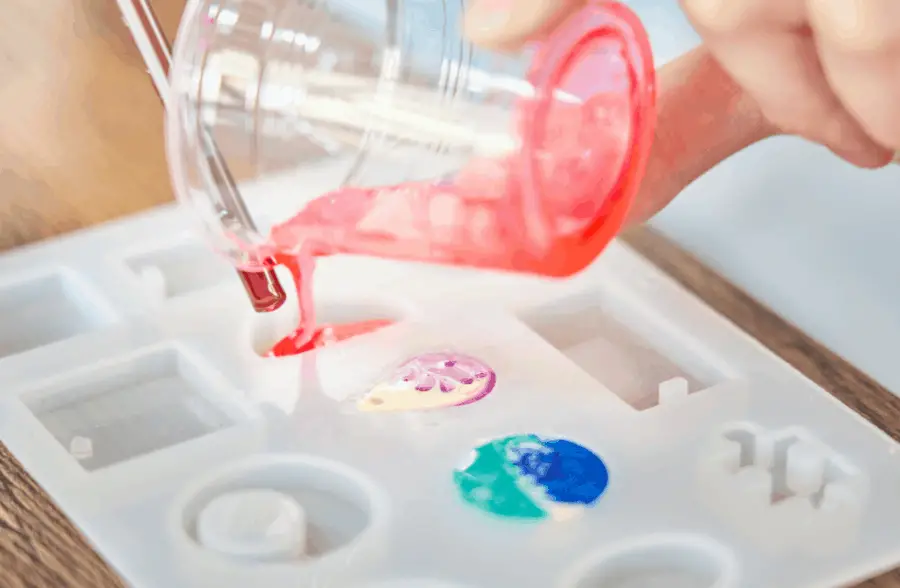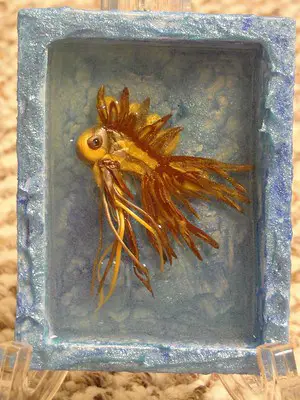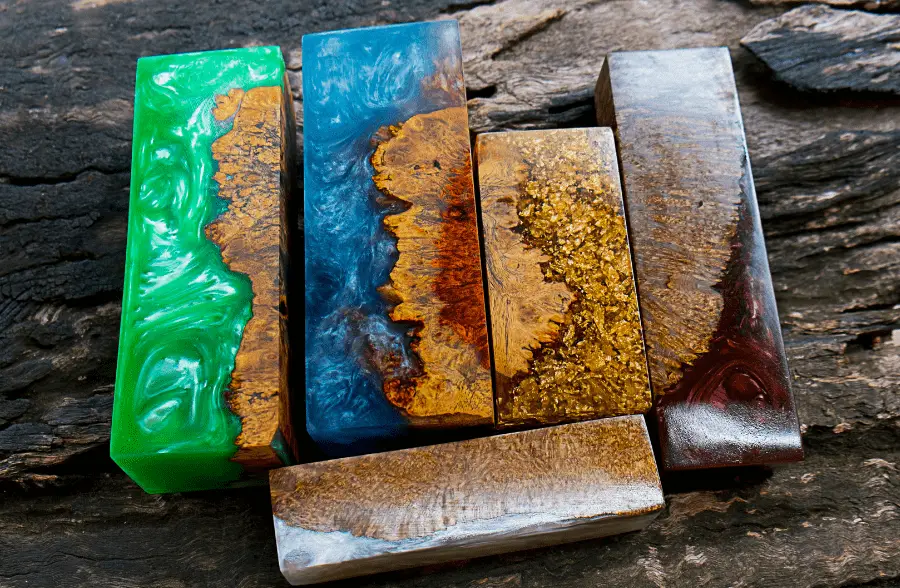Painting on resin is completely different than painting on canvas or paper. The surface texture of resin is incredibly smooth, making it harder for paint to adhere to the surface. While it is possible to paint on resin, it can be challenging, and you will need to use the right kind of paint.
There are two different ways you can use paint with resin. First, you can paint on the resin after it has had time to harden and dry. Second, you can mix the paint with the resin to make it a tinted color.
So, can you use oil paint with resin? You can use oil paints to paint resin and mix the paint in the resin. It is not the best paint to use, but it will get the job done well. Oil paint dries really slowly, which can slide around on the smooth surface the resin, so you need to be very careful.
Can You Mix Oil Paint with Epoxy Resin?

You can mix oil paint with epoxy resin to create a tinted, colored resin. It is important to keep in mind that oil paint is very messy and difficult to clean up, so make sure your workspace is prepared for the mess. You don’t want the oil paint to stain anything, so cover your whole space with plastic.
My favorite and top pick is always Arteza Oil Paints. They have so many different colors, and the quality is amazing! I usually use Arteza Paints for all my projects.

It is recommended to start with as little oil paint as you can, adding more as needed. It is much easier to add more paint in than to take paint out. To mix the paint in the resin, mix your resin first. You can then use a popsicle stick or another mixing stick to work on mixing the color into the resin.
Also, it will be easier if you add the paint straight from a tube, since this makes it possible to control the amount of paint you are adding each time. You can squeeze the paint out onto your mixing tool to be mixed in or you can add it straight into the resin.
You can also use oil paint in resin that you are going to put in a mold, as well as resin that you are going to use for a paint pouring project. It is a great, easy way to add color to your projects that will last for a long time and turn out smooth.
How Do You Mix Oil Paint and Resin?

Coloring resin with oil paint is a pretty easy process, but you need to be careful when you do. When you mix oil paint and resin, you need to pay attention to the ratios of each. It is recommended to use about one part of paint to 10 parts of resin.
Before you can start mixing the oil paint into the epoxy resin, you will need to mix the resin. It can be a little hard at first if you’ve never done it before, but once you complete the process a few times, you will get the hang of it.
Work in a well-ventilated area when you are mixing your resin. You will also want to wear gloves during the whole mixing process. There is usually a two-part solution for making resin. The amount of resin you mix will depend on the size of the artwork you are creating, but it is a one-to-one ratio.
Use your mixing cup to measure out the right amount of both solutions. If you don’t have the right measurements, the resin won’t cure. The resin also won’t cure if you don’t mix thoroughly enough. You want to mix the resin for at least two minutes.
Then, add the oil paint to the resin before you put it in your mold. To ensure you get the best color possible, start by adding just a little bit of paint at a time. Mix in between adding paint to get it fully dispersed throughout the resin.

If you need to add more paint after your first addition, add a little bit more until you reach your desired color. When you have your tinted epoxy finished, add it to the mold you are planning on using. You will see bubbles in the resin, and that’s normal.
To get rid of the bubbles, you will need to use a heat gun. I recommend getting a simple Handheld Heat Gun, like this one. It’s perfect for crafts and other household repairs. Pass it over the resin a few times on low setting. You will start to notice the bubbles making their way towards the top of the mold, then popping. When all the bubbles have popped, your resin will be ready to add any inclusions if you wish.
After you are completely finished with your resin, you need to give it plenty of time to cure. The paint should not impact the curing time. It could take anywhere from 24 to 48 hours for the resin to completely cure, so it is best to let it sit in the mold as long as possible.
Coloring Resin with Oil Paints

When it comes to coloring resin with oil paints, you can do so in two ways. The first is mixing the paint in the resin, as explained above. The second is painting the epoxy when the resin has hardened and cured. This is the less popular method because it can be difficult.
Resin has a very smooth surface, which makes it hard for paint to stick to. To get the best results, you will want to sand the surface of the resin to roughen it up a little bit. It is recommended to use 800-grit sandpaper for this job.
There shouldn’t be any holes in your resin, but if there are you will need to fill them with an epoxy putty. When the putty is dry, sand it down to match the rest of the surface. You will need to use an oil-based primer to cover the surface of your resin. This will ensure maximum adhesion to the surface.
I highly recommend using Sargent Art Gesso Primer as your base.

Next, you will want to prepare the paint for use. Keep some mineral spirits on hand to quickly clean up any spills that might occur. Pour the paint that you are going to use on a palette, then close the oil paints. The fewer fumes you are exposed to, the better.
Paint your design on the resin very carefully. Use thin layers to control where the paint goes. For an opaquer look, you will need to use multiple layers of paint. Allow the paint to dry completely before you try to add any kind of varnish to it.
To seal your oil painted resin, I recommend Grumbacher Spray Varnish. It will protect the paint, as well as give it a nice glossy finish.
Final Thoughts
Deciding how you want to color your resin can be a daunting task. It is most common to mix color into the resin to make it a tinted color, and it is less popular to paint the surface of the resin. Mixing oil paint with resin is pretty easy and only takes a few minutes.
The first thing you need to do is mix your resin, then you will slowly add in the oil paint to reach your desired opacity and color. To paint resin, you will need to prime it, paint it, and varnish your final project. Be careful during the painting process, as the paint can slide around the smooth surface of the resin.
Make sure to follow all my tips and recommended products to make sure your oil paint and resin project turns out great. Also, don’t forget to check out my other articles for all your painting Q&A’s. Happy painting!

